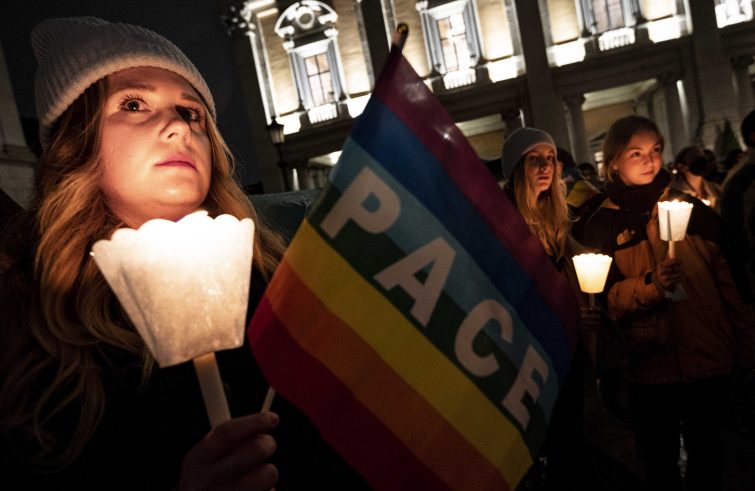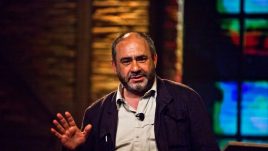
“Despite the polarisation that conflicts unfortunately produce in us, the Pope’s appeal for the Day offers us guidance and urges us to have only one vision: to always be on the side of the victims, whatever our allegiances.” Father Tonio Dell’Olio, President of the “Spirit of Assisi” Commission, presented the extraordinary event of the Day of Prayer, Fasting and Penance for Peace called by Pope Francis for Friday 27 October, which marks the 37th anniversary of the historic interreligious prayer meeting for peace convened by John Paul II. “Prayer and fasting are the tools of the poor,” said Tonio Dell’Olio. “However, I am impressed by the great respect and deep understanding that lay associations and individuals have for this initiative.”

Today we are facing a third world war fought piecemeal. After the crisis in Ukraine, the war in the Holy Land has broken out with full force. Is this a sign that the spirit of Assisi has been blowing too weakly for the past 37 years?
I have two observations. The first is that so far we have been able to sign declarations, to open spaces for dialogue, in which we have all been eager to proclaim that there is no God of war and that there is no justification for war, even from the point of view of the various religious traditions and beliefs. This was said clearly and emphatically on October 27, 1986. It was reiterated in the various meetings promoted by the Community of Sant’Egidio and it was reaffirmed with greater emphasis in Abu Dhabi with the Declaration on Human Fraternity signed by Grand Imam al-Tayyeb and Pope Francis. However, it must be recognised that these declarations have collided with the realities on the ground, so that while we agree on intentions, in specific cases we tolerate the use of weapons and recourse to a ‘just war’.
I believe that the time has come to complete the great transition from peace to non-violence. A transition that Pope Francis has begun, to a certain extent, but which has not yet been completed.
Where do we start?
This is the second consideration. The Declarations have been issued by religious leaders of different faiths, but they have not been able to penetrate the communities and become instruments of formation, education and pastoral care. We should therefore be able to transform these declarations into educational itineraries.
We have also witnessed, especially with Pope Francis, attempts to create diplomatic forums. This is the case of Cardinal Zuppi’s mission and the Pope’s telephone call to President Biden. Besides praying and fasting for peace, what can religions do?
First of all, they can improve their mutual relations and move from dialogue to encounter. Specifically, I am thinking of how useful and important it could be to have a place where religions can recognise each other and exercise solidarity together in an atmosphere of mutual trust and cooperation.
I am also thinking of a more diplomatic environment, of an inter-religious engagement that could operate within the United Nations and serve as a common space for peacebuilding efforts.
Are you thinking of an institution or forum of religions for peace?
I am, but it should not just be a spontaneous initiative of the religions, but a body recognised and legitimised by the United Nations.
Given the stalemate of hatred and the arms race, how can peace be built?
The only time I was allowed into Gaza, one of the most interesting and revealing meetings I had was with a psychiatrist who treats war trauma. He told me that in order to complete his medical degree and then his postgraduate studies, he had studied at an Israeli university, where he met, and is still friends with, many Israeli colleagues and peers. This is the crux of the matter. The younger generation in Gaza, sadly confined to the Strip since birth, has never met an Israeli other than those in uniform or the pilots of the planes that bomb and destroy ordinary life in Gaza. They see all Israelis as the enemy. And vice versa.
That is the monstrosity of war.
Does this also apply to the Ukrainians and the Russians?
Yes, and I would like to add that this applies also to two peoples that once even belonged to the same Federation.
What does this mean?
That wars are made possible by the production and proliferation of weapons. But they are also fuelled by growing feelings of hatred. It is up to us – not only the religions, but also civil society and peace movements – to smell the smoke while it is still possible to extinguish the fire, as the theologian Dossetti once said, to rekindle the signs of peace where there is enmity, to build bridges where others build walls.











